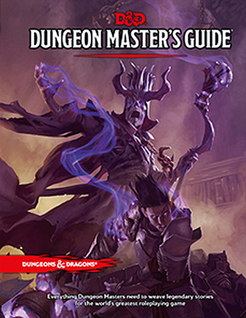 Some of my favourite Dungeons & Dragons encounters have consisted of a very simple challenge, but, because the adventurers didn’t have the right tools available to them, they needed to improvise and come up with another solution.
Some of my favourite Dungeons & Dragons encounters have consisted of a very simple challenge, but, because the adventurers didn’t have the right tools available to them, they needed to improvise and come up with another solution.
Give me a stream with a slippery log over it or an open pit just too wide for all the characters to jump and I have a situation that gives entertainment to everyone: the players as they try to come up with a solution and me as I watch their attempts at finding a solution – often quite inventive and impractical!
Why are these situations great? It’s because they get the players talking to each other! I much prefer all the players discussing what solution they can have, rather than have just one player suggesting to me “I make a Strength (Athletics) check!” The fewer dice are used to overcome a solution, the better. They can help determine whether the solution works, but only at the end point of the planning – not to avoid the planning altogether!
One of my favourite solutions to a trap came in a session of the 4E-compatible adventure, The Lost City, by Logan Bonner. The floor of a room the adventurers needed to cross was trapped. The way to disarm it was obvious: a complex mechanism in the middle of the room. Unfortunately, they had to cross the floor to get to it! How to solve it? They didn’t have a fly spell. The solution was for the Wizard to cast enlarge familiar on his bird familiar, use his Familiar Mount special ability to ride it over to the mechanism, towing behind the rogue of the party who sat on a Tenser’s floating disc. Once they reached the mechanism, the rogue disarmed the trap (while the wizard kept flying close to the disc, so it didn’t move).
We looked at this unlikely combination of abilities and burst out laughing. It was great! It was something we would never have expected, and that’s the real point of the exploration pillar: to provide the unexpected!
It’s harder to design these moments for groups you don’t know, but what you’re looking for are situations which can’t be resolved by a single die roll, where the situation allows multiple ways of overcoming it but requires the skills of two or more adventurers. Most of all, the players have to think!
Puzzles have been used in many an adventure as a way of getting a group to think and work together, but they tend to have the problem of only allowing one solution, which leads to great frustration if the group can’t spot it.
There’s a puzzle in DDAL08-08 Crypt of the Dark Kiss, which is otherwise an adventure I quite enjoyed, that requires the players to not only know that Solfège system of musical education (the Do-Re-Mi scale), but to recognise an engraving referred to it! The basic puzzle was one that was tremendously frustrating for the players. (On two tables, no-one except me knew the scale, and I was running the adventure!) I’m glad that there was another way of discovering the solution, although it’s in an encounter that might not be run due to time!
Although there are challenges for the players to overcome, another aspect of the exploration pillar is that of discovering the history, plans or other relevant facts related to the villain or location they’re confronting. It’s best when this isn’t bare. A book entitled “Why I did it” gives the solution but isn’t that interesting; it’s just the players listening to someone read it out. Pieces of the story found in various locations that allow the players to theorise about what’s missing and how everything connects? That, in my opinion, is a better solution.
In fact, having clues that lead to a reversal of what the players originally thought is even better. If the initial set-up for an adventure has them believing A, then clues lead to them realising A isn’t true? That’s an interesting situation and allows the exploration to affect their actions as the scenario progresses. Rumours – both true and false – were quite commonly given out to players at the beginning of older scenarios. Consider their use in scenarios that you design. Not everything the players find must be reliable.
Please be wary of giving out too much misinformation, however. It’s hard enough to remember details in an adventure. You want information to be succinct and memorable. A long handout detailing a life story? People will not pay attention! Using smaller details to build up to the revelation? Better!

Another warning I would give would be about puzzles that are “language based”. I play with a lot of players that English is not their first language, so those puzzles are extremely frustrating most of the time.
Oh, very definitely! Thanks for the reminder!
Regarding the doh-ray-me puzzle – it’s quite possible that the adventure author had known about the scale since they were a child and assumed it was wide knowledge. It can be hard to think outside your own box and realise that something you and your friends know well isn’t common knowledge to others.